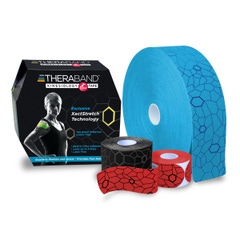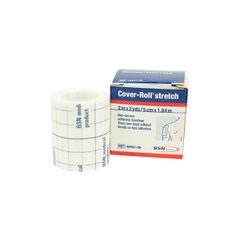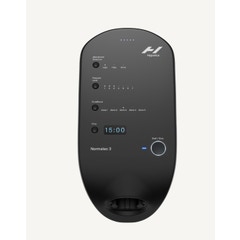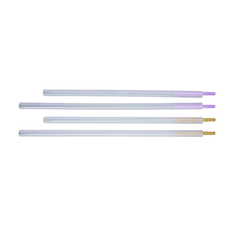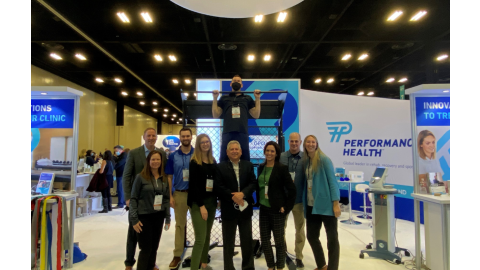Our November Clinician of the Month, André Labbé, PT, MOMT, has more than 30 years of experience in physical therapy. He currently serves as an instructor for the School of Medicine at Tulane University and is the Director of Rehabilitation and Return-to-Play for Tulane Athletics. Labbé is the Director of Rehab and provides physical therapy to the NOLA Gold, the pro-rugby team in New Orleans, Louisiana. He keeps busy, as he also runs the fascial institute biomechanics lab that was just launched at the university to study motion electromyography (EMG).
Labbé has proved you are never too old or far in your career to learn, as he recently finished his master's in sports studies at Tulane University. Prior to his sports studies, he also received a master's in orthopedic and manual physical therapy through the Ola Grimsby Institute. His first college degree came from Louisiana State University, where he studied physical therapy.
Table of Contents
André Labbé’s Must-Have Products
Why Physical Therapy
Working Beyond the 9 to 5 Schedule
Performance Health’s Impact on André Labbé
Advice for Someone Interested in Physical Therapy
Changes in Physical Therapy
André Labbé’s Must-Have Products
Why Physical Therapy
Labbé considers his story of getting into physical therapy comical. After getting in trouble for talking too much in calculus class back in high school, he chose to take a detention instead of missing his baseball game. While in detention, his teacher posed him with a question.
“[The teacher] told me, ‘You’re a smart kid and you have a lot of personality,” Labbé recalled. “Then she said to me, ‘Why don’t you think about physical therapy?’”
Labbé said that’s when the wheels started turning. Between his junior and senior year, he served as a technician at a clinic. He realized then that as an athlete he liked the idea of physical therapy and outreach programs the clinic was doing. He went on to study at Louisiana State University. Then, Labbé became the director of a clinic in Orange, Texas, at the young age of 22.
“I knew just enough to be dangerous. We covered five schools in the area, from Super 5A's like West Orange-Stark and Little Cypress-Mauriceville, to small schools,” Labbé said.
As time has gone on, his list of accomplishments as a physical therapist has included directing outpatient clinics, starting his own practice, working with professional golfers on the PGA health team, and working for the New Orleans Saints Athletic Training department. Labbé said he chose Tulane because he liked the idea of working with a team and athletes. While some of his tasks were expected, there are some parts of the job he never expected going into it.
“I’m embedded in football, and a bunch of 19- and 20-year-old males,” Labbé said laughing. “I learned who 2Chainz is and Lil Baby more than I ever thought.”
Labbé says he wouldn’t change his career path for anything. He likes working with his hands, getting to know his patients, and seeing results. He’s thankful to have had experiences with Russ Paine, who is considered a premier sports physical therapist, and later in Louisiana, experiences with David Drez, one of the first pioneers of the patella tendon graft ACL.
Working Beyond the 9 to 5 Schedule
Labbé can’t get enough of his physical therapy career, and often can be found helping other organizations and teams through outreach programs. For instance, he is a part of a group of people who supply athletic training services for the Catholic League, one of the more competitive high school athletic leagues in the New Orleans area. As a part of working with the Catholic League, Labbé helps supply athletic training services and on-site physical therapy.
He also is involved in establishing strength, conditioning, and injury prevention programs at schools.
“ACL prevention is probably our number one thing,” Labbé says. “We are very in tune to concussion here, so we have programs for not just return-to-play, but also return-to-learn.”
Labbé is also rugby certified for on-field care, has quite a bit of experience in quidditch since they hosted a tournament at Tulane, and continues to work with other physical therapists through professional programs and organizations.
Performance Health’s Impact on André Labbé
Labbé is very familiar with Performance Health and our products. In 2019, he served on the Performance Health Scientific Advisory Committee, an international group that represented multiple clinical and research disciplines from five different countries and presented research on Performance Health products. Labbé is also known to teach classes to the greater physical therapy community, and even offered a free Performance Health Academy webinar on kinesiology taping for lower extremities that you can watch here.
While he is no stranger to products we offer, like the THERABAND® Stability Trainers for balance, or THERABAND Kinesiology Tape with stretch indicators, that he uses to teach athletes how to dress themselves for self-treatment, he does have a preferred product. Out of all the options Performance Health offers, Labbé says his favorite product, by far, is THERABAND CLX ®. This is due to being able to utilize the resistance band for multiple exercises. He has also done research on the product.
“We do posterior chain activation for their (the athletes’) shoulder with bands, I can connect foot to hand, or shoulder to knee,” Labbé said. “I can do all those things and make an athlete feel what I'm trying to make them feel from a rehab - but also a performance perspective, so it’s performance health,” Labbé said.
Advice for Someone Interested in Physical Therapy
In short? Labbé says people who want a nine to five job shouldn’t be in his line of work.
“There is work life balance, but to establish yourself as something different than someone else? You always have to pick up the phone. ‘No’ is never an answer,” Labbé says.
A big concern for him with the future of physical therapy is that there might not be enough physical therapists who want to put in extra work. Working with residency programs, Labbé says there are few who are willing to beat him to work in the morning and strive to do their best. Labbé said he’s willing to teach students everything they want to hear, but some don’t have the “hunger” for learning.
When he started, Labbé recalls spending hours on the field putting in the work. Now he sees his job as being a resource to others.
“Once you get in this you become an asset, you become a resource,” Labbé said. “It's hard to walk away from a team of 100 guys.”
If you’re willing to put in the work, he says the career is wide open. An example of this is physical therapists becoming the head athletic trainer at most institutions.
Changes in Physical Therapy
If you ask Labbé about when he started in physical therapy, he’ll tell you about carrying a portable phone box around. Technology advances are just one of many changes that he believes have helped treatment come a long way.
“Tape has been a game changer for us because we can do a treatment and facilitate, inhibit, or even change tone and muscle, and allow an athlete to continue on recoveries,” Labbé says.
With corrective strapping tapes, Labbé says they can keep people doing what they want to do with soft tissue mobilization. As mentioned earlier, tape is also great for self-treatment, along with other solutions now available.
“I can send a kid home with a bottle of Biofreeze and they can use it as a kind of a cold treatment,” Labbé said. “They kind of get the same effect as if I put an ice pack on them.”
Other big advancements Labbé pointed out include using biofeedback units more often, since portable STIM is now available, and products like BlazePod, a portable reaction training kit that helps athletes after an injury.
A big change he and others in physical therapy have been trying to determine is how to get an athlete who has shredded a muscle, or had an injury, back to full function as soon as they can
“I definitely see where cutting to the chase and being as effective as possible per visit is the most impressive thing,” Labbé said.
He considers his sweet spot six or seven visits with a patient over time who has an acute injury. However, those visits might be spread out over four or five weeks, so they can do soft tissue work together.
“I think therapists need to look at a patient with the end result in mind,” Labbé said.
Being able to see at the beginning what the true issue is that needs work can help reduce the recovery time. Labbé attests being able to reduce the recovery time to new developments mentioned above, and physical therapy’s ability to continue to evolve.
“I think those are the main things that affect our practice the most, you know?” Labbé said. “It's layering of treatment. It's like making a great gumbo, you can't just put salt in it. You've got to add a bunch of other things to make it right.”
Who will be our next featured clinician? Nominate yourself or someone you know!

1. Click on the link below
2. Answer the questions on the form
3. Submit a photo of yourself
Medical Disclaimer: The information provided on this site, including text, graphics, images and other material are for informational purposes only and are not intended to substitute for professional medical advice, diagnosis or treatment. Always seek the advice of your physician or other healthcare professional with any questions or concerns you may have regarding your condition.








 France
France Australia
Australia
